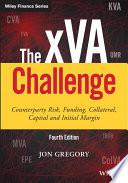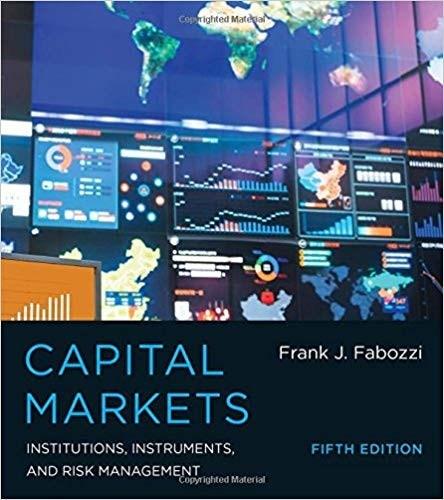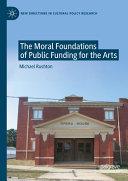Visit to download the full and correct content document: https://ebookmass.com/product/the-xva-challenge-counterparty-risk-funding-collateral -capital-and-initial-margin-4th-edition-jon-gregory/
More products digital (pdf, epub, mobi) instant download maybe you interests ...
(Original PDF) Capital Markets: Institutions, Instruments, and Risk Management 5th Edition
https://ebookmass.com/product/original-pdf-capital-marketsinstitutions-instruments-and-risk-management-5th-edition/
The Challenge of CMC Regulatory Compliance for Biopharmaceuticals, 4th 4th Edition John Geigert https://ebookmass.com/product/the-challenge-of-cmc-regulatorycompliance-for-biopharmaceuticals-4th-4th-edition-john-geigert/
Collateral (Benson First Responders Book 3) Lisa Phillips
https://ebookmass.com/product/collateral-benson-first-respondersbook-3-lisa-phillips/
The Challenge Danielle Steel
https://ebookmass.com/product/the-challenge-danielle-steel/
The Challenge of World Theatre History 1st ed. Edition
Steve Tillis
https://ebookmass.com/product/the-challenge-of-world-theatrehistory-1st-ed-edition-steve-tillis/
The Moral Foundations of Public Funding for the Arts
Michael Rushton
https://ebookmass.com/product/the-moral-foundations-of-publicfunding-for-the-arts-michael-rushton/
Humanism and the Challenge of Difference Anthony B. Pinn
https://ebookmass.com/product/humanism-and-the-challenge-ofdifference-anthony-b-pinn/
How to Get Published and Win Research Funding 1st
Edition Abby Day
https://ebookmass.com/product/how-to-get-published-and-winresearch-funding-1st-edition-abby-day/
How to Get Published and Win Research Funding 1st
Edition Abby Day
https://ebookmass.com/product/how-to-get-published-and-winresearch-funding-1st-edition-abby-day-2/
ThexVAChallenge ForothertitlesintheWileyFinanceSeries pleasesee www.wiley.com/finance
JonGregory
Thiseditionfirstpublished2020 ©2020JohnWiley&Sons,Ltd
Firsteditionpublished2009,secondeditionpublished2012byJohnWiley&Sons,Ltd,thirdedition published2015byJohnWileyandSons,Ltd.
Registeredoffice
JohnWiley&SonsLtd,TheAtrium,SouthernGate,Chichester,WestSussexPO198SQ,UnitedKingdom
Fordetailsofourglobaleditorialoffices,forcustomerservicesandforinformationabouthowtoapplyfor permissiontoreusethecopyrightmaterialinthisbookpleaseseeourwebsiteat www.wiley.com
Allrightsreserved.Nopartofthispublicationmaybereproduced,storedinaretrievalsystem,ortransmitted, inanyformorbyanymeans,electronic,mechanical,photocopying,recordingorotherwise,exceptas permittedbytheUKCopyright,DesignsandPatentsAct1988,withoutthepriorpermissionofthepublisher.
Wileypublishesinavarietyofprintandelectronicformatsandbyprint-on-demand.Somematerialincluded withstandardprintversionsofthisbookmaynotbeincludedine-booksorinprint-on-demand.Ifthisbook referstomediasuchasaCDorDVDthatisnotincludedintheversionyoupurchased,youmaydownloadthis materialat http://booksupport.wiley.com.FormoreinformationaboutWileyproducts,visit www.wiley.com
Designationsusedbycompaniestodistinguishtheirproductsareoftenclaimedastrademarks.Allbrand namesandproductnamesusedinthisbookaretradenames,servicemarks,trademarksorregistered trademarksoftheirrespectiveowners.Thepublisherisnotassociatedwithanyproductorvendor mentionedinthisbook.
LimitofLiability/DisclaimerofWarranty:Whilethepublisherandauthorhaveusedtheirbesteffortsin preparingthisbook,theymakenorepresentationsorwarrantieswithrespecttotheaccuracyorcompleteness ofthecontentsofthisbookandspecificallydisclaimanyimpliedwarrantiesofmerchantabilityorfitnessfora particularpurpose.Itissoldontheunderstandingthatthepublisherisnotengagedinrenderingprofessional servicesandneitherthepublishernortheauthorshallbeliablefordamagesarisingherefrom.Ifprofessional adviceorotherexpertassistanceisrequired,theservicesofacompetentprofessionalshouldbesought.
LibraryofCongressCataloging-in-PublicationData
Names:Gregory,Jon,1971-author.
Title:ThexVAchallenge:counterpartyrisk,funding,collateral,capital andinitialmargin/JonGregory.
Othertitles:Counterpartycreditriskandcreditvalueadjustment
Description:Fourthedition.|Chichester,WestSussex,UnitedKingdom: JohnWiley&Sons,2020.|Includesbibliographicalreferencesand index.
Identifiers:LCCN2019058762(print)|LCCN2019058763(ebook)|ISBN 9781119508977(hardback)|ISBN9781119509028(adobepdf)|ISBN 9781119509004(epub)
Subjects:LCSH:Derivativesecurities—Mathematicalmodels.|Risk management.
Classification:LCCHG6024.A3G742020(print)|LCCHG6024.A3(ebook)| DDC332.64/57—dc23
LCrecordavailableathttps://lccn.loc.gov/2019058762
LCebookrecordavailableathttps://lccn.loc.gov/2019058763
CoverDesign:Wiley
CoverImage:©SandipkumarPatel/GettyImages
Setin10/12pt,TimesNewRomanMTStdbySPiGlobal,Chennai,India. PrintedinGreatBritainbyTJInternationalLtd,Padstow,Cornwall,UK
ToGinnie,George,Christy,FloandLuna
2.5.3CCPsintheGlobalFinancialCrisis31
2.5.4TheClearingMandate32
2.5.5BilateralMarginRequirements33
2.5.6CCPsinContext34
2.6DerivativesRiskModelling36
2.6.1Value-at-risk36
2.6.2Models38
2.6.3CorrelationandDependency39
3CounterpartyRiskandBeyond41
3.1CounterpartyRisk41
3.1.1CounterpartyRiskVersusLendingRisk41
3.1.2Settlement,Pre-settlement,andMarginPeriodofRisk42
3.1.3MitigatingCounterpartyRisk45
3.1.4ProductType46
3.1.5CreditLimits48
3.1.6CreditValueAdjustment50
3.1.7WhatDoesCVARepresent?51
3.1.8HedgingCounterpartyRiskandtheCVADesk52
3.2BeyondCounterpartyRisk54
3.2.1Overview54
3.2.2EconomicCostsofaDerivative54
3.2.3xVATerms55
3.3ComponentsofxVA57
3.3.1Overview57
3.3.2ValuationandMark-to-market57
3.3.3ReplacementCostandCreditExposure58
3.3.4DefaultProbability,CreditMigration,andCreditSpreads59
3.3.5RecoveryandLossGivenDefault60
3.3.6Funding,Collateral,andCapitalCosts61
4Regulation63
4.1RegulationandtheGlobalFinancialCrisis63 4.2CapitalRequirements64
4.2.1Overview64
4.2.2CapitalRatios65
4.2.3RiskType67
4.2.4MarketRiskCapital68
4.2.5CVACapital69
4.2.6CCRCapital70
4.2.7LeverageRatio70
4.2.8CapitalFloors71
4.2.9LargeExposureFramework72
4.2.10BankStressTests73
4.2.11PrudentValuation73
4.3Liquidity73
4.3.1Overview73
4.3.2High-qualityLiquidAssets74
5.4.1RealityorCreatingtheRightIncentive?100
5.4.2ApproachforCapital101
5.4.3ApproachtoRegulatoryRatios102
5.4.4LackofArbitrage104
5.4.5EntryandExitPricing105
5.4.6xVAQuantification106
5.4.7SpecialCases106
6.3ValueNetting121
6.3.1Overview121
6.3.2Close-outNetting121
6.3.3PaymentUnderClose-out122
6.3.4Close-outandxVA124
6.3.5ISDADefinitions125
6.3.6Set-off129
6.4TheImpactofNetting130
6.4.1RiskReduction130
6.4.2TheImpactofNetting131
6.4.3MultilateralNettingandBifurcation132
6.4.4NettingImpactonOtherCreditors135
7Margin(Collateral)andSettlement137
7.1TerminationandResetFeatures137
7.1.1BreakClauses137
7.1.2ResettableTransactions140
7.2BasicsofMargin/Collateral141
7.2.1Terminology141
7.2.2Rationale142
7.2.3VariationMarginandInitialMargin144
7.2.4MethodofTransferandRemuneration145
7.2.5RehypothecationandSegregation147
7.2.6SettletoMarket150
7.2.7ValuationAgent,Disputes,andReconciliations151 7.3MarginTerms152
7.3.1TheCreditSupportAnnex152
7.3.2TypesofCSA153
7.3.3MarginCallFrequency154
7.3.4Threshold,InitialMargin,andtheMinimumTransfer Amount155
7.3.5MarginTypesandHaircuts157
7.3.6CreditSupportAmountCalculations161
7.3.7ImpactofMarginonExposure163
7.3.8TraditionalMarginPracticesinBilateralandCentrally-cleared Markets165
7.4BilateralMarginRequirements166
7.4.1GeneralRequirements166
7.4.2Phase-inandCoverage168
7.4.3InitialMarginandHaircutCalculations169
7.4.4EligibleAssetsandHaircuts171
7.4.5ImplementationandImpactoftheRequirements172
7.5ImpactofMargin173
7.5.1ImpactonOtherCreditors173
7.5.2MarketRiskandMarginPeriodofRisk174
7.5.3Liquidity,FX,andWrong-wayRisks178
7.5.4LegalandOperationalRisks179
7.6MarginandFunding180
7.6.1Overview180
7.6.2MarginandFundingLiquidityRisk181
8CentralClearing185
8.1EvolutionofCentralClearing185
8.1.1ExchangeTrading185
8.1.2EvolutionofCompleteClearing186
8.1.3WhatisaCCP?187
8.2MechanicsofCentralClearing189
8.2.1Landscape189
8.2.2Novation191
8.2.3MultilateralOffsetandCompression192
8.2.4MarginandDefaultFunds194
8.2.5ClearingRelationships195
8.3CCPRiskManagement197
8.3.1OverviewandMembershipRequirements197 8.3.2Margin198
8.3.3DefaultScenariosandMarginPeriodofRisk199
8.3.4TheLossWaterfall202
8.3.5ComparingBilateralandCentralClearing204
8.4InitialMarginandDefaultFunds205
8.4.1CoverageofInitialMarginandDefaultFunds205
8.4.2DefaultFundVersusInitialMargin206
8.4.3DefaultFundCoverage207
8.5ImpactofCentralClearing209
8.5.1AdvantagesandDisadvantagesofCentralClearing209
8.5.2WillMandatoryClearingKillCreditValueAdjustment?210
9InitialMarginMethodologies213
9.1RoleofInitialMargin213
9.1.1Purpose213
9.1.2MarginPeriodofRisk215
9.1.3Coverage:QuantitativeandQualitative217
9.1.4Haircuts218
9.1.5LinkagetoCreditQuality218
9.1.6Cross-margining220
9.2InitialMarginApproaches222
9.2.1SimpleApproaches222
9.2.2SPAN® 223
9.2.3Value-at-riskandExpectedShortfall227
9.3HistoricalSimulation229
9.3.1Overview229
9.3.2Look-backPeriod230
9.3.3RelativeandAbsoluteReturns231
9.3.4VolatilityScaling233
9.3.5Procyclicality234
9.3.6CurrentCCPMethodologies239
9.3.7ComputationalConsiderations241
9.4BilateralMarginandSIMM242
9.4.1Overview242
9.4.2StandardSchedules244
9.4.3Variance-covarianceApproaches245
9.4.4TheISDASIMM249
9.4.5ImplementationofBilateralMarginRequirements252
10TheImpactandRiskofClearingandMargining255
10.1RisksofCentralClearing256
10.1.1HistoricalCCPProblems256
10.1.2The1987StockMarketCrash258
10.1.3The2018NasdaqCase259
10.1.4RisksFacedbyCCPs260
10.1.5RisksCausedbyCCPs261
10.2AnalysisofaCCPLossStructure262
10.2.1ReviewoftheLossWaterfall262
10.2.2ImpactofDefaultFundExposure264
10.2.3ThePrisoner’sDilemmaandAIPs265
10.2.4OtherLossAllocationMethods267
10.3ImpactofMargin271
10.3.1BackgroundandHistoricalExamples271
10.3.2VariationMargin273
10.3.3InitialMargin275
10.3.4CostandxVA276
10.3.5Seniority277
10.3.6BilateralandClearedMarkets277
Section3BuildingBlocks
11FutureValueandExposure283
11.1CreditExposure283
11.1.1PositiveandNegativeExposure283
11.1.2DefinitionofValue284
11.1.3CurrentandPotentialFutureExposure285
11.1.4NatureofExposure286
11.1.5Metrics288
11.2DriversofExposure292
11.2.1FutureUncertainty292
11.2.2CashFlowFrequency293
11.2.3CurveShape294
11.2.4Moneyness297
11.2.5CombinationofProfiles298
11.2.6Optionality299
11.2.7CreditDerivatives300
11.3Aggregation,PortfolioEffects,andtheImpactofCollateralisation302 11.3.1TheImpactofAggregationonExposure302
11.3.2Off-marketPortfolios304
11.3.3ImpactofMargin305
11.4Funding,Rehypothecation,andSegregation308 11.4.1FundingCostsandBenefits308
11.4.2DifferencesBetweenFundingandCreditExposure309
11.4.3ImpactofSegregationandRehypothecation310 11.4.4ImpactofMarginonExposureandFunding312
12CreditSpreads,DefaultProbabilities,andLGDs315 12.1DefaultProbability315 12.1.1RealWorldandRiskNeutral315 12.1.2CVAandRisk-neutralDefaultProbabilities316 12.1.3DefiningRisk-neutralDefaultProbabilities319 12.1.4LossGivenDefault321
12.2CreditCurveMapping323 12.2.1Overview323 12.2.2TheCDSMarket324 12.2.3LossGivenDefault326 12.2.4GeneralApproach327 12.3GenericCurveConstruction330 12.3.1GeneralApproach330
12.3.2Intersection(Bucketing)Approach332
12.3.3Cross-sectionMethodology334
12.3.4CurveShape,Interpolation,andIndices336
12.3.5Third-partyProviders337
12.3.6Hedging338
13RegulatoryMethodologies339 13.1Overview339
13.2CreditRisk(DefaultRisk)Capital341 13.2.1StandardisedApproach341
13.2.2InternalRatings-basedApproach342 13.2.3Guarantees343
13.3CVA(MarketRisk)Capital343
13.3.1TheCVACapitalCharge343
13.3.2StandardisedCVARiskCapitalCharge344 13.3.3BA-CVA345
13.3.4AdvancedCVACapitalRiskCharge348
13.3.5SA-CVA351
13.3.6CapitalReliefandEUExemptions355
13.4ExposureCalculationMethodologies356
13.4.1ExposureatDefault356
13.4.2CurrentExposureMethod358
13.4.3StandardisedApproachforCounterpartyCreditRisk361 13.4.4BroaderImpactofSA-CCR366
13.4.5TheInternalModelMethod367 13.4.6TheLeverageRatio372
13.4.7Wrong-wayRisk373 13.5Examples374
13.5.1ComparisonofEADMethods374
13.5.2ComparisonofCapitalCharges377
13.5.3ImpactofHedges379
13.6CentralCounterpartyCapitalRequirements384
13.6.1Background384
13.6.2TradeExposure385
13.6.3DefaultFundExposure385
13.6.4ClientClearing386
14Funding,Margin,andCapitalCosts389 14.1BankFinancing389 14.2Capital391 14.2.1MinimumCapitalRatiosandCapitalCosts391 14.2.2LeverageRatio393 14.2.3CostofCapital394 14.3Funding394 14.3.1Overview394 14.3.2CostofFunding398
14.3.3TheRisk-freeRate,IBOR,andOIS400
14.3.4IBORTransition402
14.3.5FundingSpreads403
14.3.6NSFRandLCR406
14.3.7Accounting406
15QuantifyingExposure409
15.1MethodsforQuantifyingExposure409
15.1.1Overview409
15.1.2ParametricApproaches410
15.1.3SemianalyticalMethods411
15.1.4MonteCarloSimulation414
15.2ExposureAllocation414
15.2.1Overview414
15.2.2IncrementalandMarginalExposure414
15.2.3ImpactofDependency417 15.3MonteCarloMethodology419
15.3.1BasicFramework419
15.3.2Revaluation,CashFlowBucketing,andScaling421
15.3.3Risk-neutralorPhysicalMeasure423
15.3.4AggregationLevel429
15.4ChoiceofModels430
15.4.1Overview430
15.4.2InterestRates432
15.4.3ForeignExchange435
17.3.3BilateralCVAFormula500
17.3.4Close-outandDefaultCorrelation502
17.3.5TheUseofDVA503
17.4CVAAllocation506
17.4.1IncrementalCVA506
17.4.2MarginalCVA509
17.5ImpactofMargin510
17.5.1Overview510
17.5.2Example511
17.5.3InitialMargin512
17.5.4CVAtoCCPs513
17.6Wrong-wayRisk514
17.6.1Overview514
17.6.2QuantificationofWWRinCVA516
17.6.3Wrong-wayRiskModels518
17.6.4JumpApproaches522 17.6.5CreditDerivatives524
17.6.6CollateralisationandWWR525
17.6.7CentralClearingandWWR526
18FVA 529
18.1Overview529 18.2FVAandDiscounting530
18.2.1MarketPractice530
18.2.2SourceofFundingCostsandBenefits531
18.2.3DefinitionofFVA534
18.2.4SymmetricFVAFormula535
18.2.5CVA/DVA/FVAFramework539
18.2.6TheFVADebate546
18.2.7FundingCostsandFVAAccounting548 18.3AsymmetricFVA551
18.3.1Overview551
18.3.2AsymmetricFVA552
18.3.3FVAAllocation555
18.3.4NSFRInvariance558
18.3.5FundingStrategies560
18.3.6LCRCosts561
18.3.7FundingandWrong-wayRisk563
19KVA565
19.1Overview565 19.2CapitalValueAdjustment(KVA)566
19.2.1ReturnonCapital566
19.2.2KVAFormula567
19.2.3CapitalProfiles568
21.3OperationofanxVADesk638
21.3.1InteractionwithaTreasury638
21.3.2Capital640
21.3.3SystemsandQuantification641
21.3.4xVAOptimisation645
ListofSpreadsheets ListofSpreadsheets Oneofthekeyfeaturesofthefirstandsecondeditionsofthisbookwastheaccompanyingspreadsheetsthatwerepreparedtoallowthereadertogainsomesimpleinsight intosomeofthequantitativeaspectsdiscussed.Manyoftheseexampleshavebeenused fortrainingcoursesandhavethereforeevolvedtobequiteintuitiveanduser-friendly.The spreadsheetscanbedownloadedfreelyfromJonGregory’swebsite, www.cvacentral.com, underthecounterpartyrisksection.Newexamplesmaybeaddedovertime.
Spreadsheet4.1 LCRexample.
Spreadsheet4.2 NSFRexample.
Spreadsheet6.1 Compressionexample.
Spreadsheet7.1 Margincalculationincludingthresholdsandinitialmargins.
Spreadsheet9.1 Initialmargincalculationofaninterestrateswapusinghistorical simulation.
Spreadsheet9.2 ExampleISDASIMM™calculations.
Spreadsheet10.1 IllustrationofAuctionIncentivePool(AIP)calculation.
Spreadsheet10.2 Illustrationofvariationmargingainshaircutting(VMGH)and selectivetear-upapproachestolossallocation.
Spreadsheet11.1 Simpleexposuremetriccalculation.
Spreadsheet11.2 EPEandPFEforanormaldistribution.
Spreadsheet11.3 Simpleexampleofacross-currencyswapprofile.
Spreadsheet11.4 SimplecalculationoftheexposureofaCDS.
Spreadsheet11.5 Simpletwotransactionexampleofnettingeffects.
Spreadsheet11.6 Impactofvariationandinitialmarginonexposureandfunding.
Spreadsheet12.1 Calculatingrisk-neutraldefaultprobabilities.
Spreadsheet12.2 Examplecross-sectionalmethodologyforcreditspreads.
Spreadsheet13.1 ImplementationofSA-CCR.
Spreadsheet13.2 Calculationof‘alpha’factor.
Spreadsheet13.3 EPEandEEPEexample.
Spreadsheet13.4 Comparisonofcapitalcostsacrossdifferentmethodologies.
Spreadsheet15.1 Semianalyticalcalculationoftheexposureforaswap.
Spreadsheet15.2 Examplemarginalexposurecalculation.
Spreadsheet15.3 Simplesimulationofaninterestrateswapexposure.
Spreadsheet15.4 Simplemarginsimulationbasedonportfoliovalue.
Spreadsheet15.5 One-factorHull-Whitemodelforexposureforinterestrateproducts.
Spreadsheet15.6 Illustrationoftheimpactofnetting.
Spreadsheet15.7 MarginalEPEs.
Spreadsheet15.8 Notionalresettingcross-currencyswap.
Spreadsheet15.9 Quantifyingtheimpactofmarginonexposure.
Spreadsheet16.1 ColVAcalculation.
Spreadsheet17.1 DirectCVAcalculationforaninterestrateswap.
Spreadsheet17.2 Path-wiseCVAcalculationforaninterestrateswap.
Spreadsheet17.3 CVAandDVAcalculations.
Spreadsheet17.4 IncrementalCVAandDVAcalculations.
Spreadsheet17.5 MarginalCVAandDVAcalculations.
Spreadsheet17.6 Simplewrong-wayriskexample.
Spreadsheet17.7 Directsimulationofwrong-wayriskforaninterestrateswap.
Spreadsheet17.8 ExposuredistributionusingaGaussiancopulaapproach.
Spreadsheet18.1 SymmetricFVAcalculationcomparedtodiscountingapproach.
Spreadsheet18.2 AsymmetricFVAcalculation.
Spreadsheet18.3 FVAAllocation.
Spreadsheet19.1 KVAcalculationforinterestrateswap.
ListofAppendices ListofAppendices ThefollowingisalistofAppendicesthatcontainadditionalmathematicaldetail.These Appendicescanbedownloadedfreelyfrom www.cvacentral.com
Appendix7A Exposureandtimeperiodscaling
Appendix11A Exposuremetricsforanormaldistribution
Appendix11B Forwardandswapexposureprofiles
Appendix11C Approximatecross-currencyprofile
Appendix11D Simpleaggregationexampleforanormaldistribution
Appendix12A Risk-neutraldefaultprobabilitycalculation
Appendix13A Largehomogenouspoolapproximationforcreditlosses
Appendix13B StandardisedCVAcapitalformula
Appendix15A SwaptionanalogyandtheEPEofaninterestrateswap
Appendix15B MarginalEPE
Appendix15C CollateralisedEPEapprox.
Appendix15D Simpleinitialmargincalculation
Appendix16A ColVAformula
Appendix17A CVAformuladerivation
Appendix17B CVAasarunningspread
Appendix17C CVAapprox.viaEPE
Appendix17D BilateralCVAformula(CVAandDVA)
Appendix17E IncrementalCVA
Appendix17F Wrong-wayriskandCVA
Appendix17G CVAforaCDScontract
Appendix18A FVAformulaanddiscounting
Appendix19A KVAcalculation
Appendix21A Betahedging
Acknowledgements Acknowledgements Thefirsteditionofthisbookwaspublishedaboutadecadeagointheaftermathofa globalfinancialcrisisandfocusedontheimportanceofcounterpartycredit.Sincethen, theareaofcounterpartycreditriskhasbroadenedtoconsidertheimportanceofrelated aspectssuchascollateral,funding,capital,andinitialmargin.Thisareahascontinuedto seerapidchangeduetoregulation,accountingstandards,andevolvingmarketpractice. Aspreviously,thisismuchmorethananeweditionbecausemostofthecontenthasbeen rewrittenandexpandedsignificantly.
Ihopethisbookcanbeusedasacomprehensiveandrelativelynon-mathematicalreferenceforthesubjectwenowgenerallyrefertoasxVA.Thereareothermathematical booksonthissubjectandthebookbyAndrewGreen(Green2015)isrecommendedasa comprehensivequantitativeguidetothesubject.
Aswithpreviouseditions,Ihavesavedspacebyputtingmathematicalappendices togetherwithaccompanyingspreadsheetsonmypersonalwebsiteat www.cvacentral .com.Sincemanydonotstudythismaterialindepth,thishasprovedtobeareasonable compromiseformostreaders.Thereisalsoalistoferratathatcanbefoundonthis website.
IhavealsomadeuseofnumeroussurveyresultsandIamgratefultoSolumFinancial andDeloitteforallowingmetoreproducethese.IamalsogratefultoIBMandIHS Markitwhohaveprovidedcalculationexamplesinpreviouseditions,someofwhichare usedhere.Thesewillallbementionedinthetext.
Finally,Iwouldliketothankthefollowingpeopleforfeedbackonthisandearlier editionsofthebook:ManuelBallester,TeimurazBarbakadze,RonnieBarnes,Raymond Cheng,VladimirCheremisin,MichaelClayton,AndrewCooke,ChristianCrispoldi, DanielDickler,Wei-MingFeng,JuliaFernald,LeonardFichte,PieroFoscari,Teddy Fredaigues,SayokoFujisawa,NaoyukiFujita,ShotaFukamizu,DimitriosGiannoulis, GlenGibson,SergejGoriatchev,ArthurGuerin,KazuhisaHirota,KaleKakhiani, ToshiyukiKitano,HenryKwon,EdvinLundstrom,DavidMengle,RichardMorrin, IvanPomarico,YufiPak,Hans-WernerPfaff,FrancescoIvanPomarico,ErikvanRaaij, KeiSagami,GuilhermeSanches,NeilSchofield,AndreasSchwaderlapp,FlorentSerre, MasumShaikh,AnaSousa,SalvatoreStefanelli,RichardStratford,CarlosSterling, NorikazuTakei,HidetoshiTanimura,ToddTauzer,SatoshiTerakado,NickVause, FredericVrins,NanaYamada,andValterYoshida.
JonGregory December2019
AbouttheAuthor AbouttheAuthor JonGregoryisanindependentexpertspecialisingincounterpartyriskandxVArelated projects.Hehasworkedonmanyaspectsofcreditriskandderivativesinhiscareer,being previouslywithBarclaysCapital,BNPParibas,andCitigroup.Heisasenioradvisorfor SolumFinancialDerivativesAdvisory.HeisalsoafacultymemberforLondonFinancial StudiesandtheCertificateofQuantitativeFinance.HecurrentlyservesontheAcademic AdvisoryBoardofIHSMarkitandisaManagingEditorofthejournal Quantitative Finance. JonhasaPhDfromCambridgeUniversity.
Section1 Basics Introduction 1 Introduction In2007,aglobalfinancialcrisis(GFC)startedwhicheventuallybecamemoresevereand long-lastingthancouldhaveeverbeenanticipated.Alongtheway,thereweremajorcasualtiessuchasthebankruptcyoftheinvestmentbankLehmanBrothers.Governments aroundtheworldhadtobailoutotherfinancialinstitutionssuchasAmericanInternationalGroup(AIG)intheUSandtheRoyalBankofScotlandintheUK.
TheGFCcausedamajorfocusoncounterpartycreditrisk(CCR)whichisthecredit riskinrelationtoderivativeproducts.Aderivativetradeisacontractualrelationshipthat maybeinforcefromafewdaystoseveraldecades.Duringthelifetimeofthecontract,the twocounterpartieshaveclaimsagainsteachothersuchasintheformofcashflowsthat evolveasafunctionofunderlyingassetsandmarketconditions.Derivativestransactions createCCRduetotheriskofinsolvencyofoneparty.ThisCCRinturncreatessystemic riskduetoderivativestradingvolumebeingdominatedbyarelativelysmallnumberof largederivativescounterparties(‘dealers’)thatarethenkeynodesofthefinancialsystem.
Post-GFC,participantsinthederivativesmarketbecamemoreawareofCCRandits quantificationviacreditvalueadjustment(CVA).Theyalsostartedtocreatemorevalue adjustments,orxVAs,inordertoquantifyothercostssuchasfunding,collateral,and capital.Derivativespricingusedtobefocusedonso-called‘exotics’withthemajorityof simpleorvanilladerivativesthoughttoberelativelystraightforwardtodealwith.However,thebirthofxVAhaschangedthisandeventhemostsimplederivativesmayhave complexpricingandvaluationissuesarisingfromxVA.
RegulationhasalsoenhancedtheneedtoconsiderxVA(orXVA).Increasingcapitalrequirements,constraintsonfunding,liquidity,andleveragetogetherwithaclearing mandateandbilateralmarginrequirementsallmakederivativestradingmoreexpensive andcomplex.However,derivativesarestillfundamentallyimportant:forexample,withoutthemenduserswouldhavetouselesseffectivehedges,whichwouldcreateincome statementvolatility.TheInternationalSwapsandDerivativesAssociation(ISDA2014b) reportsthat85%ofenduserssaidthatderivativeswereveryimportantorimportantto theirriskmanagementstrategyand79%saidtheyplannedtoincreaseormaintaintheir useofover-the-counter(OTC)derivatives.
ThisbookaimstofullyexplainxVAandtheassociatedlandscapeofderivativestrading. Chapters2to5willdiscussthebasicsofderivatives,regulation,CCR,andintroducethe conceptofxVA.Chapters6to10willdiscussriskmitigationmethodssuchasnetting, margining,andcentralclearing.Chapters11to15willcoverthebuildingblocksofxVA suchasexposure,creditspreads,funding,andcapitalcosts.Finally,Chapters16to20 willdefinethexVAsinsequencewhilstalsodiscussingtheirrelationshipstooneanother. Chapter21willdiscussthe‘xVAdesk’andmanagementofxVA.
TheonlineAppendicesandSpreadsheetsprovidemoredetailonvariousxVAcalculations.Thisbookisarelativelynon-mathematicaltreatmentofxVA.Foramore mathematically-rigoroustextforquantitativeresearchers,AndrewGreen’sbook(Green 2015)isstronglyrecommended.
Derivatives 2 Derivatives 2.1INTRODUCTION Derivativestransactionsrepresentcontractualagreementseithertomakepaymentsorto buyorsellanunderlyingsecurityatatimeortimesinthefuture.Thetimesmayrange fromafewweeksormonths(forexample,futurescontracts)tomanyyears(forexample, long-datedswaps).Thevalueofaderivativewillchangewiththelevelofoneormore underlyingassetsorindicesandpossiblydecisionsmadebythepartiestothecontract.In manycases,theinitialvalueofatradedderivativewillbecontractuallyconfiguredtobe zeroforbothpartiesatinception.
Derivativesarenotaparticularlynewfinancialinnovation;forexample,inmedieval times,forwardcontractswerepopularinEurope.However,derivativesproductsandmarketshavebecomeparticularlylargeandcomplexinthelastthreedecades.Oneofthe advantagesofderivativesisthattheycanprovideveryefficienthedgingtools.Forexample, considerthefollowingrisksthataninstitution,suchasacorporate,mayexperience:
• Interestraterisk.Theyneedtomanageliabilitiessuchastransformingfloating-into fixed-ratedebtviaaninterestrateswap.
• Foreignexchange(FX)risk.Duetobeingpaidinvariouscurrencies,thereisaneedto hedgecashinflowinthesecurrencies,forexample,usingFXforwards.
• Commodityrisk.Theneedtolockincommoditypriceseitherduetoconsumption(e.g. airlinefuelcosts)orproduction(e.g.aminingcompany)viacommodityfuturesor swaps.
Inmanyways,derivativesarenodifferentfromtheunderlyingcashinstruments.They simplyallowonetotakeaverysimilarpositioninasyntheticway.Forexample,anairline wantingtoreduceitsexposuretoapotentialriseinoilpricecanbuyoilfutures,whichare cash-settledandthereforerepresentaverysimplewaytogo‘longoil’(withnostorageor transportcosts).Aninstitutionwantingtoreduceitsexposuretoacertainassetcando soviaaderivativecontract(suchasatotalreturnswap),whichmeansitdoesnothaveto selltheassetdirectlyinthemarket.
Therearemanydifferentusersofderivativessuchassovereigns,centralbanks, regional/localauthorities,hedgefunds,assetmanagers,pensionfunds,insurancecompanies,andnon-financialcorporations.Allusederivativesaspartoftheirinvestment strategyortohedgetheriskstheyfacefromtheirbusinessactivities.Duetotheparticular hedgingneedsofinstitutionsandrelatedissues,suchasaccounting,manyderivativesare relativelybespoke.Forexample,acorporationwantingtohedgetheinterestrateriskin afloating-rateloanwillwantaninterestrateswappreciselymatchingthetermsofthe loan(e.g.maturity,paymentfrequency,andreferencerate).
Financialinstitutions,mainlybanks,providederivativecontractstotheirenduser clientsandhedgetheirriskswithoneanother.Whilstmanyfinancialinstitutions
tradederivatives,manymarketsaredominatedbyarelativelysmallnumberoflarge counterparties(oftenknownas‘dealers’).Suchdealersrepresentkeynodesofthefinancialsystem.Forexample,therearecurrentlyaround35globally-systemically-important banks(G-SIBs),whichisatermlooselysynonymouswith‘toobigtofail’.G-SIBbanks aresubjecttostricterrules,suchashigherminimumcapitalrequirements.
Duringthelifetimeofaderivativescontract,thetwocounterpartieshaveclaimsagainst eachother,suchasintheformofcashflowsthatevolveasafunctionofunderlyingassets andmarketconditions.Derivativestransactionscreatecounterpartycreditrisk(counterpartyrisk)duetotheriskofinsolvencyofoneparty.Counterpartyriskreferstothe possibilitythatacounterpartymaynotmeetitscontractualrequirementsunderthecontractwhentheybecomedue.
Counterpartyriskismanagedovertimethroughclearing;thiscanbeperformedbilaterally,whereeachcounterpartymanagestheriskoftheother,orcentrallythroughacentral counterparty(CCP).Asthederivativesmarkethasgrown,sohastheimportanceofcounterpartyrisk.Furthermore,thelessonsfromeventssuchasthebankruptcyofLehman Brothershavehighlightedtheproblemswhenamajorplayerinthederivativesmarket defaults.This,inturn,hasledtoanincreasedfocusoncounterpartyriskandrelated aspects.
2.2THEDERIVATIVESMARKET 2.2.1Exchange-tradedandOTCDerivatives Withinthederivativesmarkets,manyofthesimplestproductsaretradedthrough exchanges.Aderivativesexchangeisafinancialcentre(Figure2.1)wherepartiescan tradestandardisedcontractssuchasfuturesandoptionsataspecifiedprice.Anexchange promotesmarketefficiencyandenhancesliquiditybycentralisingtradinginasingle place,therebymakingiteasiertoenterandexitpositions.Exchange-tradedderivatives arestandardisedcontracts(e.g.futuresandoptions)andareactivelytraded.Itiseasyto buyacontractandselltheequivalentcontracttoterminate(‘close’)theposition,which canbedoneviaoneormorederivativeexchanges.Pricesaretransparentandaccessible toawiderangeofmarketparticipants.
Figure2.1 Illustrationofexchange-tradedandbilaterally-tradedderivatives.
Comparedtoexchange-tradedderivatives,OTCderivativestendtobeless-standard structuresandaretypicallytradedbilaterally(i.e.betweentwoparties).Sincethereisno thirdpartyinvolved,theyaretraditionallyprivatecontractsandareoftennotactively tradedinanysecondarymarket.However,theirmainadvantageistheirinherentflexibility,astheydonotneedtobestandardisedand,intheory,anytransactiontermscanbe accommodated.Forexample,acustomerwantingtohedgetheirproductionoruseofan underlyingassetatspecificdatesmaydosothroughacustomisedOTCderivative.Sucha hedgemaynotbeavailableonanexchange,wheretheunderlyingcontractswillonlyallow certainstandardcontractualterms(e.g.maturitydates)tobeused.AcustomisedOTC derivativemaybeconsideredmoreusefulforriskmanagementthananexchange-traded derivative,whichwouldgiverisetoadditional‘basisrisk’(inthisexample,themismatch ofmaturitydates).Ithasbeenreportedthatthemajorityofthelargestcompaniesin theworldusederivativesinordertomanagetheirfinancialrisks.1 Duetothebespoke hedgingneedsofsuchcompanies,OTCderivativesarecommonlyusedinsteadoftheir exchange-tradedequivalents.
CustomisedOTCderivativesarenotwithouttheirdisadvantages,ofcourse.Acustomer wantingtounwindatransactionandavoidfuturecounterpartyriskmustdoitwiththe originalcounterparty,whomayquoteunfavourabletermsduetotheirprivilegedposition. Evenassigningor‘novating’thetransactiontoanothercounterpartytypicallycannotbe donewithoutthepermissionoftheoriginalcounterparty.ThislackoffungibilityinOTC transactionscanalsobeproblematic.Thisaside,thereisnothingwrongwithcustomising derivativestothepreciseneedsofclients,aslongasthisisthesoleintention.However, providingaservicetoclientsisnottheonlyroleofOTCderivatives:somearecontracted forregulatoryarbitrageoreven(arguably)misleadingaclient.Suchproductsareclearly notsociallyusefulandgenerallyfallintothe(relativelysmall)categoryofexoticOTC derivativeswhichinturngeneratemuchofthecriticismofOTCderivativesingeneral.
OTCmarketsworkverydifferentlycomparedtoexchange-tradedones,asoutlined inTable2.1.OTCderivativesaretraditionallyprivatelynegotiatedandtradeddirectly betweentwopartieswithoutanexchangeorotherintermediaryinvolved(betweena dealerandenduserorbetweentwodealers).OTCmarketsdidnothistoricallyinclude tradereporting,whichisdifficultbecausetradescanoccurinprivate,withouttheactivity
Table2.1 Comparisonbetweenexchange-tradedandOTCderivatives.
Exchange-tradedOver-the-counter(OTC)
Termsofcontract • Standardised(maturity,size, strike,etc.)
Maturity
• Standardmaturities,typically atmostafewmonths
Liquidity • Verygood
• Flexibleandnegotiable
• Negotiableandnon-standard
• Oftenmanyyears
• Limitedandsometimesverypoorfor non-standardorcomplexproducts
1 ISDA(2009).Over94%oftheWorld’sLargestCompaniesUseDerivativestoHelpManageTheirRisks, AccordingtoISDASurvey.PressRelease(23April). www.isda.org
beingvisibleinanyway(suchastoanexchange).Legaldocumentationisalsobilaterally negotiatedbetweenthetwoparties,althoughcertainstandardshavebeendeveloped.
2.2.2Clearing Afteratransactionisexecuted,andbeforeithasbeensettled,thereisthequestionof clearing(Figure2.2).AnOTCderivativecontractlegallyobligesitscounterpartiesto makecertainpaymentsoverthelifeofthecontract(oruntilanearlyterminationofthe contract).Thesepaymentsareinrelationtobuyingorsellingcertainunderlyingsecurities orexchangingcashflowsinreferencetounderlyingmarketvariables.Settlementrefersto thecompletionofallsuchlegalobligationsandcanoccurwhenallpaymentshavebeen successfullymadeoralternativelywhenthecontractisclosedout(e.g.settledinsome otherwayoroffsetagainstanotherposition).‘Clearing’istheprocessbywhichpayment obligationsbetweentwoormorefirmsarecomputed(andoftennetted),and‘settlement’ istheprocessbywhichthoseobligationsareaffected.Themeansbywhichpaymentson OTCderivativesareclearedandsettledaffecthowthecounterpartyriskthatisborne bycounterpartiesinthetransactionismanaged.Broadlyspeaking,clearingrepresents theperiodbetweenexecutionandsettlementofatransaction.Oneofthekeyaspects ofclearingis,therefore,counterpartyriskthatariseswhenapartyfailstoperformon contractualresponsibilities.
Thetimeperiodforclassically-exchange-tradedderivativesisoftennomorethanafew days(e.g.aspotequitytransaction)oratmostafewmonths(e.g.afuturescontract).A keyfeatureofmanyOTCderivativesisthattheyarenotsettledforalongtimesincethey generallyhavelongmaturities.Thisisincontrasttoexchange-tradedproducts,which oftensettleindaysor,atthemost,months.ForOTCderivatives,thetimehorizonfor theclearingprocessismorecommonlyyearsandoftenevendecades(andtherepresentationinFigure2.2isthereforemisleadingsinceitdoesnotemphasisethelongperiodof clearing).ThisisonereasonwhyOTCclearingisofgrowingimportanceasmoresuch productsbecomesubjecttocentralclearing.
Broadlyspeaking,clearingcanbeeitherbilateralorcentral.Inthelattercase,athird partytakesresponsibilityformanagingcounterpartyriskandassociatedcomponents (e.g.collateralisation).AllderivativesexchangesnowhaveanassociatedCCPthatperformsthisclearingfunction.Inthebilateralcase,thetwopartiesenteringatradetake responsibilityfortheprocessesandrisksduringtheclearingprocess.Historically,theOTC derivativesmarkethasbeenbilaterallycleared,butmorerecentlyOTCderivativeshave beguntobecomecentrallycleared(Figure2.3).
Buyer and seller enter into a legal obligation to buy/sell securities or another underlying
Transaction is managed prior to settlement (margining, cashflow payments, etc.)
Transaction is settled via exchange of securities and/or cash and legal obligations are therefore fulfilled
Figure2.2 Illustrationoftheroleofclearinginfinancialtransactions.
Exchange-traded
OTC-traded
Centrally cleared
Centrally cleared
Bilaterally cleared
Figure2.3 Clearinginexchange-tradedandOTCderivatives.
Inbilateralclearing,riskmanagementprocessesaredealtwithbilaterallybythecounterpartiestoeachOTCcontract,whereasforcentrallyclearedtransactions,theriskmanagementfunctionsaretypicallycarriedoutbytheassociatedCCP.
Whilstanexchangeprovidesefficientpricediscovery,2 italsotypicallyprovidesameans ofmitigatingcounterpartyrisk.Sincethemid-1980s,allexchangeshavehadsuchcentral clearingfacilities.Morerecently,centralclearinghasbeenappliedtoOTCderivatives.
Centralclearingcanbeseenasanaturalextensionofexchange-tradingbut,sinceit requiresacertainamountofstandardisation,notallOTCderivativescanbecentrally cleared.WhilstthevolumeofcentrallyclearedOTCderivativesisincreasing,therewill alwaysbearelativelysignificantportionofbilaterallyclearedOTCderivatives.Other methods,suchasmultilateralcompression(Section6.2.4),canbeusedinbilateralmarkets andcanbeseenasutilisingsomeofthefunctionalityofcentralclearing.
2.2.3MarketOverview In1986,thetotalnotionalofOTCderivativeswasslightlylessthanthatofexchangetradedderivativesat$500billion.3 Arguably,evenatthispoint,OTCmarketsweremore significantduetothefactthattheyarelonger-dated(forexample,a10-yearOTCswap ismanytimesmoreriskythanathree-monthfuturescontract).Nevertheless,inthefollowingtwodecades,theOTCderivativesmarketgrewexponentiallyinsize(Figure2.4) intermsofnotional.ThiswasduetotheuseofOTCderivativesascustomisedhedging instrumentsandalsoinvestmentvehicles.TheOTCmarkethasalsoseenthedevelopmentofcompletelynewproducts(forexample,thecreditdefaultswapmarketincreased byafactorof10betweentheendof2003andtheendof2008).Therelativepopularity ofOTCproductsisduetotheabilitytotailorcontractsmorepreciselytoclientneeds. Exchange-tradedproducts,bytheirverynature,donotoffercustomisation.
ThecurtailedgrowthtowardstheendofthehistoryinFigure2.4canbeclearly attributedtotheglobalfinancialcrisis(GFC),wherebankshavemovedawayfromsome derivatives(forexample,duetohighcapitalcharges)andclientshavebeenlessinterested insomederivatives(particularlyasstructuredproducts).However,thereductioninrecent yearsisalsopartiallyduetocompressionexercisesthatseektoreducecounterpartyrisk byremovingoffsettingandredundantpositions(discussedinmoredetailinSection6.2.4).
OTCderivativesincludethefollowingfivebroadclassesofderivativesecurities: interestrate(andinflation)derivatives,foreignexchangederivatives,equityderivatives, commodityderivatives,andcreditderivatives.ThesplitofOTCderivativesbyproduct
2 Thisistheprocessofdeterminingthepriceofanassetinamarketplacethroughtheinteractionsofbuyers andsellers.
3 ISDA(1986).SurveycoveringonlyOTCswaps.
Figure2.4 TotaloutstandingnotionalofOTCandexchange-tradedderivativestransactions.The figurescoverinterestrate,foreignexchange,equity,commodity,andcreditderivativecontracts. Notethatnotionalamountsoutstandingarenotdirectlycomparabletothoseforexchange-traded derivatives,whichrefertoopeninterestornetpositions,whereastheamountsoutstandingforOTC marketsrefertogrosspositions(i.e.withoutnetting).Centrally-clearedtradesalsoincreasethetotal notionaloutstandingduetoadouble-countingeffect,sinceclearinginvolvesbookingtwoseparate transactions.Source:BankforInternationalSettlements(BIS).
typeisshowninFigure2.5.Interestrateproductscontributethemajorityofthe outstandingnotional,withforeignexchangeandcreditdefaultswaps(CDSs)seemingly lessimportant.However,thisgivesasomewhatmisleadingviewoftheimportanceof counterpartyriskinotherassetclasses,especiallyforeignexchangeandCDSs.Whilst mostforeignexchangeproductsareshort-dated,thelong-datednatureandexchange ofnotionalincross-currencyswapsmeantheycarryalotofcounterpartyrisk.CDSs notonlyhavealargevolatilitycomponentbutalsoconstitutesignificant‘wrong-way risk’.Therefore,whilstinterestrateproductsmakeupasignificantproportionofthe counterpartyriskinthemarket,onemustnotunderestimatetheotherimportant(and sometimesmoresubtle)contributionsfromotherproducts.
Lookingatthenotionalofderivativescontractscanbemisleading,evenwhendoing soonlyonarelativebasis.Akeyaspectofderivativesproductsisthattheirexposureis substantiallysmallerthanthatofanequivalentloanorbond.Consideraninterestrate swapasanexample:thiscontractinvolvestheexchangeoffloatingagainstfixedpayments andhasnoprincipalriskbecauseonlycashflowsareexchanged.Furthermore,eventhe cashflowsarenotfullyatriskbecause,atcashflowpaymentdates,onlythenetdifference infixedandfloatingcashflowswillbeexchanged.Ifacounterpartyfailstoperform,then aninstitutionwillhavenoobligationtocontinuetomakecashflowpayments.Instead,the swapwillbeunwoundbasedonsomedefinedvaluation.Iftheswaphasanegativevalue foraninstitution,thentheymaystandtolosenothingiftheircounterpartydefaults.4
4 Assumingtheswapcanbereplacedwithoutanyadditionalcost.










